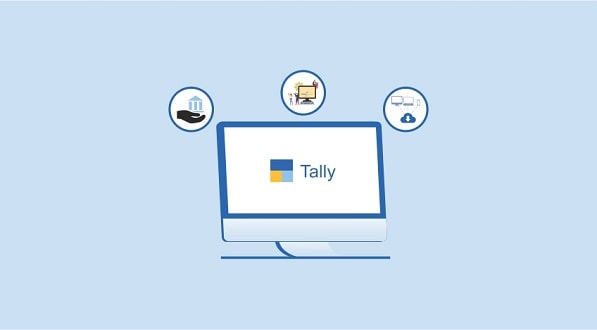In today’s digital age, businesses are constantly seeking new and effective ways to promote their products and services online. With the proliferation of social media platforms, search engines, and digital advertising networks, the opportunities for reaching potential customers seem limitless.
However, for many companies, the challenge lies not in identifying marketing channels but in effectively financing their online marketing efforts. Traditional advertising methods often come with hefty price tags, leaving smaller businesses and startups struggling to compete in the crowded digital landscape.
In this article, we’ll explore innovative financing strategies that businesses can employ to bolster their online marketing initiatives without relying solely on traditional ad spend.
Strategic Partnerships
Strategic partnerships are among the most effective ways for businesses to finance their online marketing efforts. Companies can pool resources and reach a broader audience without significantly increasing their marketing budget by teaming up with complementary brands or industry influencers. Strategic partnerships can take various forms, including co-branded campaigns, joint events, or cross-promotional initiatives.
For example, a clothing retailer might collaborate with a popular fashion blogger to showcase their latest collection to a wider audience. By leveraging the influencer’s existing following, the retailer can generate buzz around their brand without spending a fortune on traditional advertising channels.
Manual Link Building Finances
While digital marketing often focuses on paid strategies, manual link-building remains crucial to a comprehensive online marketing strategy. Manual link building involves the process of acquiring backlinks from other websites through outreach, content creation, and relationship-building efforts. While it may not directly involve monetary transactions, manual link-building requires investments in time, resources, and sometimes even finances.
Resource Allocation
Businesses must allocate resources for content creation, outreach efforts, and relationship-building with other website owners or bloggers. This might involve hiring skilled content creators or outreach specialists or investing in outreach automation tools to streamline the process.
Content Creation Costs
Producing high-quality content that attracts backlinks often requires investments in research, writing, editing, and design. Whether creating blog posts, infographics, videos, or interactive content, businesses need to budget for content creation expenses to ensure the effectiveness of their link-building campaigns.
Outreach Expenses
Outreach is a critical aspect of manual link building. It involves reaching out to website owners, bloggers, and influencers to request backlinks or collaborations. This may involve costs associated with email marketing platforms, outreach software, or hiring outreach specialists to effectively manage communication with potential link partners.
Partnership Opportunities
In some cases, businesses may need to invest in partnership opportunities or sponsorships to secure backlinks from authoritative websites or influencers within their industry. While this may involve financial investments, the long-term benefits of building relationships with influential partners can outweigh the initial costs.
Monitoring and Analysis
Effective link-building campaigns require ongoing monitoring and analysis to track the performance of acquired backlinks, identify new opportunities, and measure the impact on search engine rankings and website traffic. Investing in analytics tools or hiring SEO professionals to analyze link metrics and adjust strategies accordingly can contribute to the success of manual link-building initiatives.
Influencer Collaborations
Influencer marketing has emerged as a powerful tool for brands looking to connect with consumers in a more authentic way. Instead of relying on traditional advertising, companies can partner with influencers with loyal and engaged followers on social media platforms like Instagram, YouTube, and TikTok. These influencers can create sponsored content that showcases the brand’s products or services in a relatable and engaging manner, resonating with their audience on a personal level.
Unlike traditional celebrity endorsements, influencer collaborations often come at a fraction of the cost, making them an attractive option for businesses with limited marketing budgets.
Affiliate Marketing
Affiliate marketing is another cost-effective way for businesses to finance their online marketing efforts. In this model, companies partner with affiliates who promote their products or services in exchange for a commission on sales generated through their unique referral links.
This performance-based approach ensures that businesses only pay for actual results, making it a low-risk investment compared to traditional advertising. Affiliate marketing can be particularly effective for e-commerce businesses, as it allows them to tap into the vast network of bloggers, vloggers, and social media influencers who can drive targeted traffic to their websites.
User-Generated Content
User-generated content (UGC) refers to any form of content – such as reviews, testimonials, photos, or videos – created by customers or fans of a brand. Leveraging UGC in marketing campaigns provides social proof and authenticity and offers a cost-effective way to generate buzz around a brand.
By encouraging customers to share their experiences and opinions on social media using branded hashtags or tags, businesses can amplify their reach and engage with their audience on a more personal level. Additionally, featuring UGC in marketing materials can help businesses save on content creation costs while building a stronger connection with their customers.
Alternative Financing Options
In addition to the aforementioned strategies, businesses can explore alternative financing options specifically tailored for marketing initiatives. Crowdfunding platforms like Kickstarter or Indiegogo offer companies an opportunity to raise funds for specific marketing campaigns or product launches while generating buzz and pre-orders from early adopters.
Similarly, micro-loans or peer-to-peer lending platforms provide access to capital for marketing investments without the need for extensive credit checks or collateral. By thinking outside the box and exploring innovative financing solutions, businesses can unlock new opportunities for growth and success in the competitive online marketplace.
Exploring the Future of Financing Marketing Strategies
Innovative financing strategies offer businesses a viable alternative to traditional ad spend when it comes to financing their online marketing efforts. By leveraging strategic partnerships, influencer collaborations, affiliate marketing, user-generated content, and alternative financing options, companies can maximize their marketing ROI while reaching a broader audience and driving sustainable growth. As the digital landscape continues to evolve, businesses must remain agile and adaptable, exploring new and creative ways to finance their online marketing initiatives and stay ahead of the competition.















